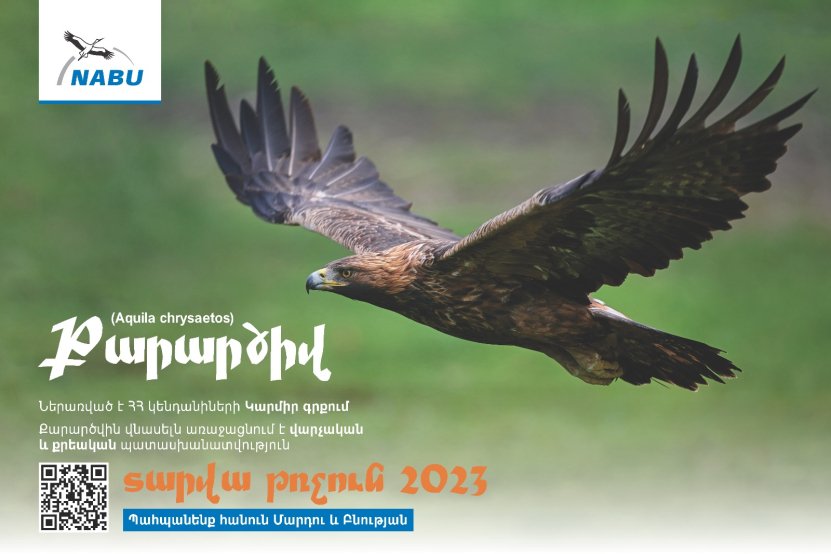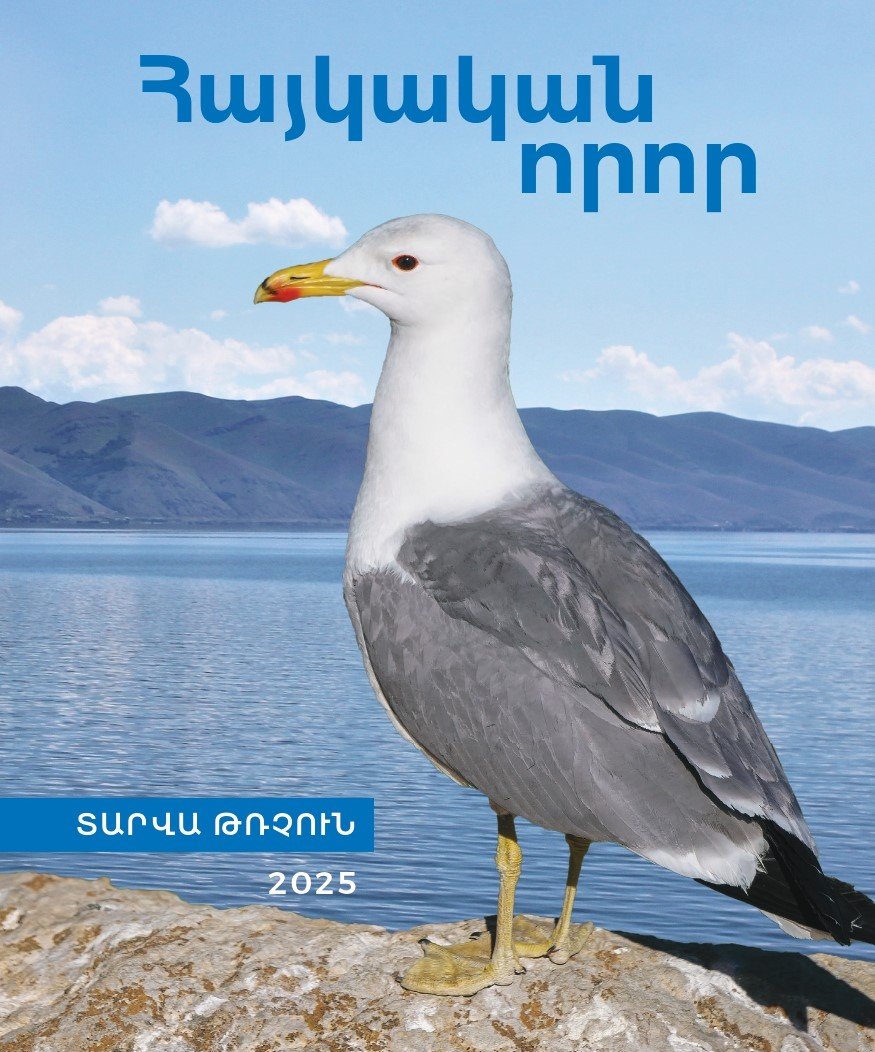
Golden eagle (Aquila chrysaetos)
Order: Accipitriformes (Falconiformes)
Family: Accipitridae
The golden eagle is the bird of the year 2023 in Armenia. The aim of the annual Bird of the Year educational campaign is to select a bird species that symbolizes that year each year and to draw the attention of the general public to the importance of protecting that species and its habitats. As a result of the public vote, the golden eagle was chosen as the "Bird of the Year 2023”.
Distribution. The golden eagle is found in North America, North Africa, Japan, India, Eurasia east of China and south of Central Asia (about 140,000,000 km2). The golden eagle is one of the largest eagles in Eurasia. Its wingspan can reach up to 2.3 m and it weighs over 6 kg. Five subspecies of concrements are known. The subspecies Aquila chrysaetos homeyeri is found in Armenia. According to recent data, 34-38 pairs nest in Armenia.
The environment. The species occupies flat or montane, mostly open habitats, often above the forest line, up to 4000 m above sea level. In the Himalayas, it has been recorded up to 6200 m (Watson, 2010).
Diet. The diet of this species is very broad, it hunts medium-sized mammals, birds, reptiles, sometimes fish, amphibians and insects. If possible, they do not refuse to eat carrion. The weight of prey animals is usually 0.5-4.0 kg. They search for prey by soaring high in the sky or, in bad weather conditions, flying low on slopes, for example. Sometimes the prey is watched from high places (poles, rocks, tree tops, etc.).
Breeding. A golden eagle can have up to 12 nests in one territory, at a certain distance from each other. This species is very cautious and sensitive to any disturbing factor. They usually use the same nest from year to year or use several nests in succession.
They usually lay 1-2 eggs. Two individuals incubate, but usually the female incubates more than the male. Incubation lasts 41-45 days, and the first flight of chicks takes place on the 60-70th day of life. Only one robust cub survives to this stage. They build nests on rocks and also in trees. Different pairs build nests at a fairly long distance from each other - 8-10 km. They use branches, wool, and grass to build their nests.
Flight. In general, adults are considered sedentary, and young eagles disperse during the first few years of life to a distance of up to 1000 km from their breeding grounds. The golden eagle populations inhabiting mostly northern areas, such as Alaska or northern Russia, usually do not move further south.
Conservation status. Preliminary estimates of the global population range from 120,000 to 160,000 adults. In spite of the fact that the species is included in the Red List of the International Union for Conservation of Nature (IUCN) (ver. 3.1) as "Least Threatened" (LC), still in Armenia the golden eagle is included in the Red Book of Animals of RA and is considered a rare, "vulnerable" (VU D1) type.
Risk Factors: In Armenia, the most negative impact is:
- Direct harassment by humans,
- poaching and illegal hunting for the purpose of selling or keeping birds in captivity,
- Inadequate state of control and environmental education,
- Pesticides used in agriculture that accumulate in species that may be food for golden eagle







